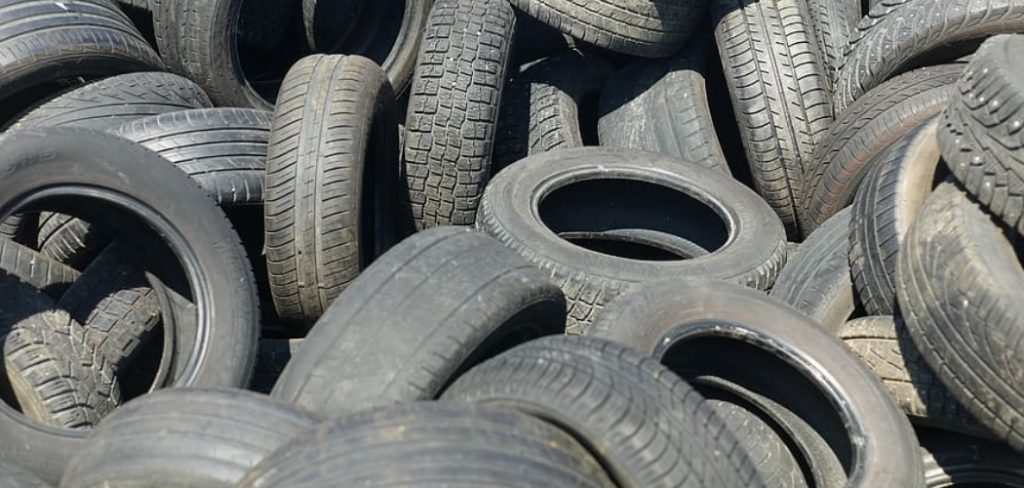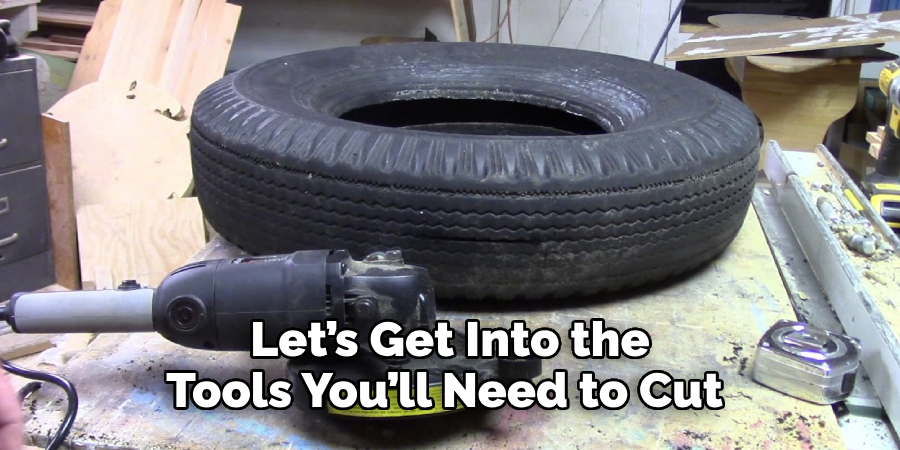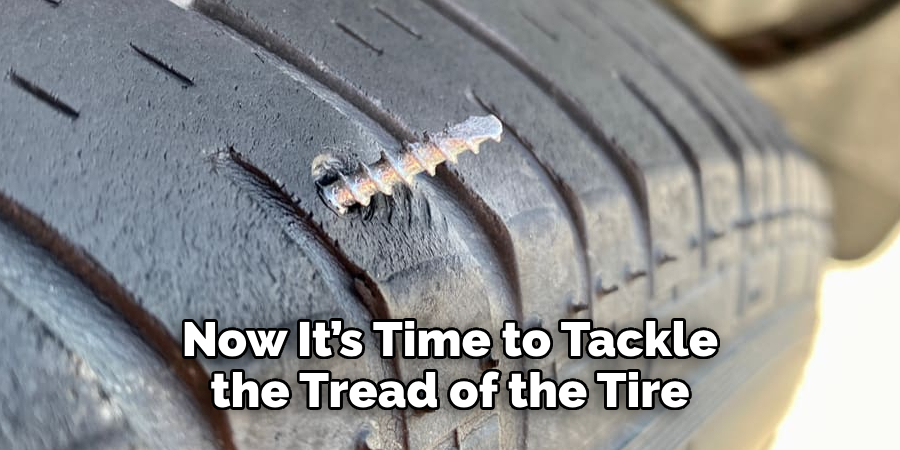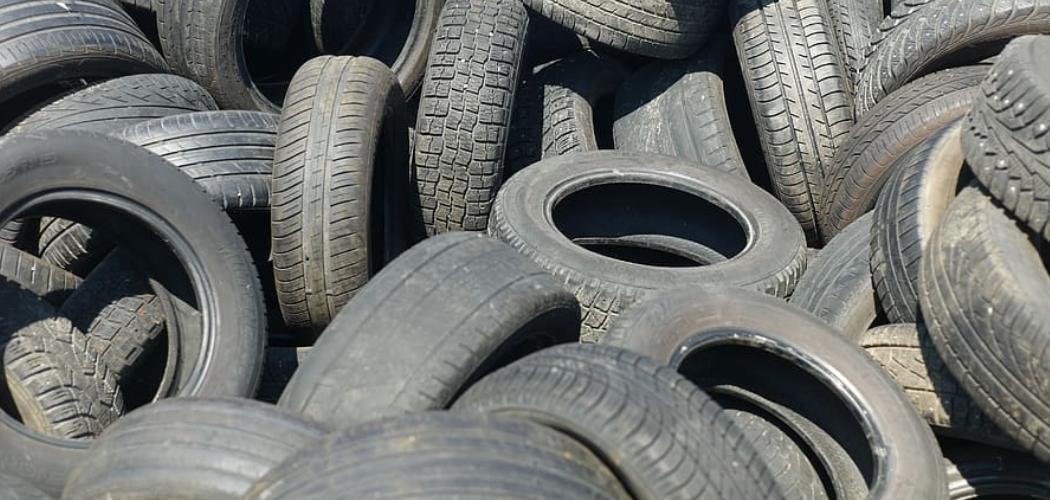Tire disposal can be quite a daunting and troublesome task, especially when you’re dealing with multiple old or damaged tires. While it may seem like the easiest option to simply toss them in a landfill, this not only harms the environment but is also illegal in most areas. So what’s the solution?

Cutting up tires for proper disposal! Now, before you shake your head thinking that it sounds like a time-consuming and difficult process, let me assure you that it doesn’t have to be. With the right tools and techniques, cutting up tires can actually be an efficient and easy task.
In this blog post on how to cut up tires for disposal, we’ll guide you through everything you need to know about how to cut up tires for safe and responsible disposal. So buckle up because by the end of this article, you’ll become an expert on tire cutting – helping both yourself and Mother Nature in the process!
Why is Proper Tire Disposal Important?
Before we dive into the actual process of cutting up tires, let’s understand why it’s so important to dispose of them properly in the first place. The Environmental Protection Agency (EPA) estimates that approximately 290 million tires are discarded every year in the United States alone. These tires take up a lot of space and can also pose health and safety hazards if not disposed of correctly.
Improperly disposed tires can collect rainwater and become breeding grounds for mosquitoes, potentially spreading diseases like the West Nile virus. They can also release toxic chemicals into the soil and water, causing harm to plants and animals. Furthermore, tire fires are a common occurrence in landfills, releasing hazardous smoke and pollutants into the air.
Properly cutting up tires for disposal not only eliminates these risks but also allows the rubber and other materials to be recycled and repurposed. According to the Rubber Manufacturers Association, 81.4% of old tires were recycled in 2019 – making tire recycling an essential part of sustainable waste management.
Tools Required for Cutting Up Tires

Now that we understand the importance of proper tire disposal, let’s get into the tools you’ll need to cut them up. These tools can be easily found at your local hardware store or online:
- Utility Knife – for cutting through rubber
- Handheld Saw – for thicker parts like steel belts and beads
- Wire Cutters – for removing wires and other metal pieces
- Protective Gear – gloves, safety glasses, and a dust mask to protect yourself from sharp edges and debris
- Workbench or Table – for stability and ease while cutting
- Screwdriver or Pry Bar – for removing any embedded objects like rocks or screws in the tire tread
- Heavy-Duty Scissors – for cutting through smaller parts like sidewalls
11 Step-by-step Guidelines on How to Cut Up Tires for Disposal
Step 1: Prepare Your Work Area
Before you start cutting up tires, it’s vital to prepare your work area for safety and ease of use. Clear out any obstacles and debris and lay down a tarp or sheet to catch falling pieces. You can also place your tire on a workbench or table for better stability. It’s also a good idea to have a broom and dustpan nearby for easy cleanup afterward.
Step 2: Remove the Valve Stem
Take a screwdriver or pry bar and remove the valve stem from the tire to deflate it completely. This step will make it easier to cut through the rubber. But be careful not to cut yourself on the sharp valve stem, so it’s best to wear gloves and eye protection during this step. If your tire doesn’t have a valve stem, you can skip this step. The same goes for tubeless tires.
Step 3: Remove Any Embedded Objects

Next, inspect and remove any objects stuck in the tire tread like rocks or screws. These items can damage your tools or cause injuries if they fly out during cutting. You can use a screwdriver or pliers to remove them. It’s best to do this step while the tire is still inflated, so you have better access to any objects embedded in it. The last thing you want is to hit a metal object while cutting and damage your tools or injure yourself.
Step 4: Start Cutting the Sidewall
With the tire deflated and cleared of any obstacles, it’s time to start cutting. Begin with the sidewall by making a vertical cut from the outer edge towards the tread. You can use heavy-duty scissors or a utility knife for this step. Avoid using regular household scissors as they may not be strong enough to cut through the thick rubber.
Step 5: Cut Off the Bead
Once you’ve cut all around the sidewall, use your wire cutters to snip off the bead of the tire. The bead is made up of steel wires that hold the tire in place on the rim. You may need to make multiple cuts with the wire cutters as these wires can be quite tough. It’s crucial to wear safety gloves for this step as the wires can be sharp.
Step 6: Remove the Inner Liner
After removing the bead, you’ll see a black inner liner that covers the inside of the tire. Use your utility knife or scissors to cut through this layer and remove it. This step is essential as it helps expose any remaining wires or metal pieces that may have been lurking beneath the liner. You can also use a wire brush to clean out any debris or residue from the inner layer.
Step 7: Cut Through the Tread

Now it’s time to tackle the tread of the tire. Depending on the type of tread, you can use a utility knife or handheld saw for this step. If your tire has an aggressive tread pattern, you may need to use a saw as it can be challenging to cut through with a knife. Start by making horizontal cuts along the tread and then work your way towards the center of the tire.
Step 8: Remove Any Remaining Wires
As you cut through the tread, you may come across small wires or metal pieces. Use your wire cutters to remove them carefully. It’s essential to check for these pieces as they can easily puncture your tires while driving, causing a blowout. The last thing you want is to cut up your old tires only to have your new ones damaged.
Step 9: Cut the Rubber into Smaller Pieces
Once you’ve removed all the wires and metal pieces, it’s time to cut the rubber into smaller, more manageable pieces. You can use a utility knife or scissors for this step. If you plan on recycling the rubber, it’s best to cut it into smaller pieces as most recycling facilities only accept tires in pieces smaller than three inches.
Step 10: Dispose of the Pieces Properly
Now that you’ve successfully cut up your old tires, it’s time to dispose of them properly. You can either take them to a tire recycling facility or use them for various DIY projects like making tire swings or garden planters.
If you’re unsure of how to dispose of the pieces, contact your local waste management department for guidance. It’s essential to dispose of tires properly as they can be a hazard in landfills and take hundreds of years to decompose.
Step 11: Clean Up Your Work Area
After you’ve disposed of the tire pieces, it’s important to clean up your work area thoroughly. Sweep any debris and place all tools back in their proper places. Dispose of any gloves, masks, or other protective gear used during the process.
It’s crucial to keep your work area clean and safe not just for yourself but also for others who may use the space after you. And there you have it, eleven simple steps on how to cut up tires for proper disposal.

Remember to take all necessary precautions and dispose of the pieces responsibly. By following these guidelines, you can effectively and safely dispose of your old tires while also potentially giving them a second life through recycling or DIY projects. Now go forth and tackle those old tires with confidence! Happy cutting!
Conclusion
In conclusion, now that you have learned different methods for cutting up tires for disposal, it is important to remember that proper tire disposal is essential not only for environmental reasons but also for safety concerns. By properly disposing of tires, we can prevent them from becoming hazardous waste and contributing to pollution.
Additionally, learning how to cut up tires on your own can save you money in the long run and give you a sense of empowerment and self-sufficiency. Don’t be afraid to try different techniques and tools mentioned in this post on how to cut up tires for disposal, as each one may work differently depending on the type of tire and your personal preference.
Remember to always follow safety precautions and wear protective gear when handling tires. Let’s do our part in keeping our environment clean and safe by properly disposing of tires. With these tips and tricks, you can confidently tackle any tire-cutting task with ease. Now go out there and make a positive impact!

